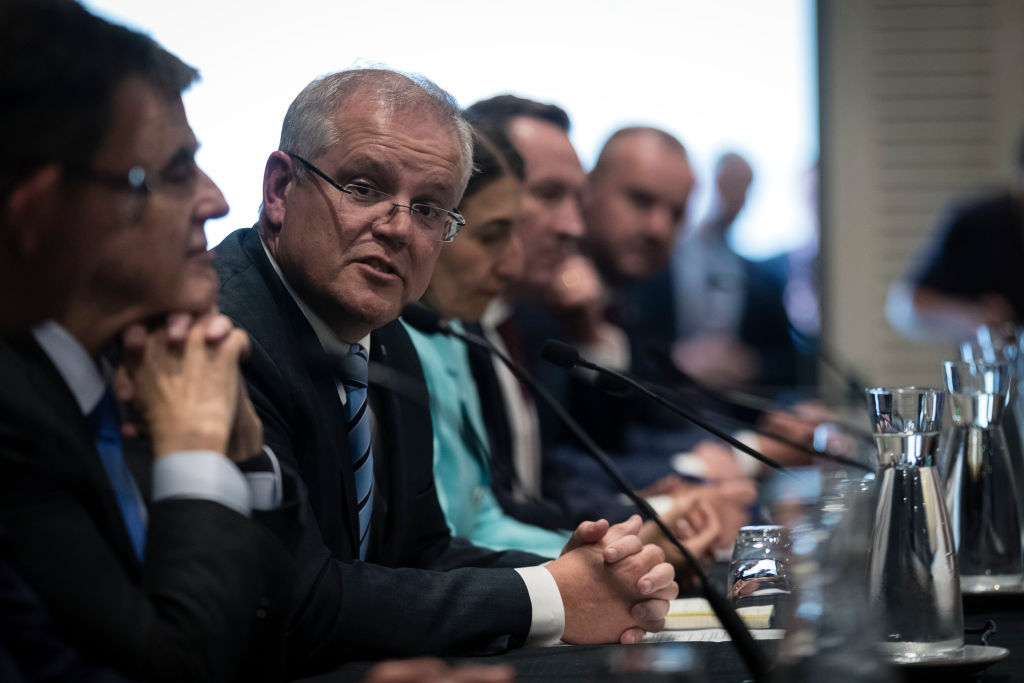As Australia’s strategic environment changes, foreign policy funding must change too (part 2)

In part 1 of this series, we talked about Australia’s rapidly changing strategic environment. In this follow-up, we focus on ways that Australia’s foreign policy funding models should adapt to accommodate to this new environment.
Research commissioned to inform decision-makers must be empirical, data-driven and policy-relevant.
But there’s been a widespread trend across think tanks globally to focus on opinion and analysis rather than original and comprehensive research. Academic foreign-policy-focused research brings different challenges because, globally, the sector is encouraged to publish in formats (journal articles, academic books) that aren’t timely, easily accessible or regularly read by policymakers.
Original empirical research that is policy-relevant ishard and costly to conduct but is infinitely more useful to policymakers as it is grounded in facts and new datasets that help inform policy recommendations, rather than abstract analysis.
The Australian government should provide incentives for grant recipients to conduct policy research in teams for a more rounded approach.
Many foreign policy challenges now cut across so many different areas (security, technology, economics, human rights, and so on) and are so complex that it can be impossible for any individual to grapple with them alone. Teams with wide expertise allow for a much richer range of approaches to empirical research and a more holistic view of policy problems.
We have built our research output at ASPI’s International Cyber Policy Centre by developing agile teams that constantly change and evolve to suit the topic. This enables us to weave in diverse expertise such as multiple languages or deep country or thematic knowledge, in addition to unique open-source intelligence skills such as working with geospatial information and big data and using information operation investigative techniques.
Government departments tend to fund research using very small buckets of ad hoc money—though exceptions include Defence’s annual strategic policy grants program and long-term funding arrangements that some departments, including Foreign Affairs and Trade, have with Australian universities.
This small-bucket approach encourages production of reports based on short-term, and shallower, research efforts. These reports are cheaper to produce, and prioritise analysis and opinion over original data-driven work. They are a less considered and robust contribution to policymaking.
To overcome this, departments should pool some of their multiple small grants into a smaller number of bigger grants and/or increase grant sizes.
They should offer grants with less restrictive bidding parameters. Our centre secures most of its grants by identifying empirical research gaps and then pitching projects to likely funders to address them. But government departments commonly request proposals that fit within narrow bands and meet short-term objectives. They are drafted in such restrictive ways that they limit opportunities for innovative solutions.
Governments may have genuine questions they need help answering, and there’s clearly a legitimate market for such grants, but the best think-tank contribution is often empirical research that grapples with policy questions just ahead of public servants’ immediate concerns.
For departments and agencies that fund research, the challenge is the natural tendency to focus on the current issues of concern, not those about to be encountered. With the lead times involved in bidding for grants, awarding them and then delivering the research, policymakers often commission research that addresses yesterday’s issues and fails to help them with the challenges they face.
All funders would like to have a say over any research they’re paying for, and without funders no research would take place at universities, think tanks or elsewhere. However, to deliver high-quality, independent research, it’s not tenable to give funders influence over research products.
Having worked in multiple think tanks that zealously protect their independence while taking funding from multiple sources, it’s clear to us that true research independence is certainly achievable.
There are risks, especially when creating new entities. A think tank funded by a government department without a charter that guarantees independence (like ASPI’s does) would quickly become captured by the department and would struggle to deliver anything of value. Similarly, placing think tanks inside institutions like universities can also be tricky, because the new think tank can easily be captured by the priorities and views of the host.
The government should provide a pool of grants for untied research that tackles sensitive topics.
The best research think tanks produce is often work no one will fund. If it breaks new ground it’s often difficult to convince potential funders of its merit.
If it’s on topics that government departments consider sensitive—such as foreign interference or most matters associated with China, besides economics—policymakers will actively avoid funding it, no matter how much they need it.
Awarding some large grants can enable breakthrough research initiatives.
The university and think-tank models haven’t innovated much over the past century, but advances in technology and changes to the information ecosystem have made the policy-relevant research space ripe for new approaches.
Supporting new and technology-heavy infrastructure requires substantial funding that short-term grants won’t cover. Given the likely rewards for policymakers, capital investments could help research institutes build such infrastructure.
A pool of grants should also be established for quick and timely research. From time to time, opportunities arise for timely research that current funding models don’t accommodate.
For example, social media companies periodically make available large datasets of state actor disinformation operations to research institutes. The window for timely analysis is anywhere from a few days to a week. Other empirical research opportunities arise in times of crisis, such as during the Covid-19 pandemic. To enable research that seizes on these opportunities, consideration could be given to making small and medium rapid-release grants for timely, policy-relevant projects.
It’s possible to raise new funding and grow the pool for public policy research, but it’s not easy. With a few exceptions, such as the Lowy family that funds the Lowy Institute, there’s not a tradition of non-government funding, including business, foundation and civil-society funding, for public policy research in Australia.
The government could encourage that practice through greater public recognition, public–private partnerships and tax concessions to increase the pool of non-government research funding.
The underlying message from the G8 universities’ submission to this inquiry appears to point to a concern that high-quality, highly relevant think-tank research threatens to take attention and funding from university research. It would be unfortunate to view research in this field in such zero-sum terms. We need more high-quality, policy-relevant research from both universities and think tanks.
Australia’s foreign policy community, unlike those of the United States or Europe, suffers from a lack of movement between government, think tanks and the business community. This partially reflects the small size and relative immaturity of the Australian think-tank sector, but it’s also deeply cultural.
Most public servants in this sector have never worked outside government, and sometimes never outside their department or agency. The public service makes this movement difficult and, culturally, many departments and agencies haven’t valued outside experience and expertise.
We’re aware of many examples where high-performing think-tankers and others in the business community have sought to return to the government department they started their career in only to be told they’d have to return to the APS level they left the department at. Giving no recognition to the five to 10 years of non-government experience they’ve acquired (including new skills, perspectives and networks) makes the transition back to government untenable.
This narrow and culturally entrenched outlook is slowly changing, but encouraging a flow of people between foreign-policy-focused government and non-government roles would help.
Mixed backgrounds also need to be valued more in government recruitment and promotion processes. Departments need more senior executives who have worked outside them and who bring a more three-dimensional view of Australia’s place in the world, including looking at our foreign policy challenges from different angles, rather than having experienced a view from one department. APS staff should be guaranteed unpaid leave when they seek to take up certain foreign-policy-relevant roles outside government. And the numbers of secondments from government into policy-focused think tanks (currently minimal) should be significantly increased.









